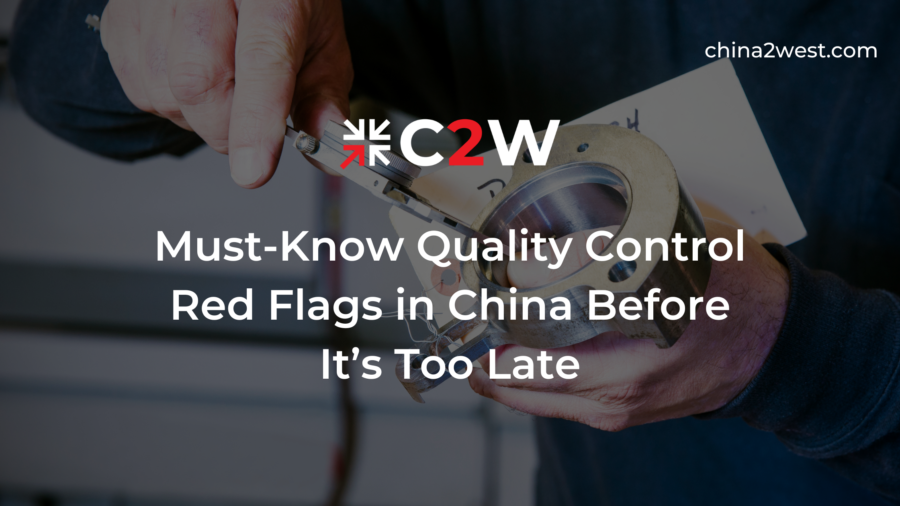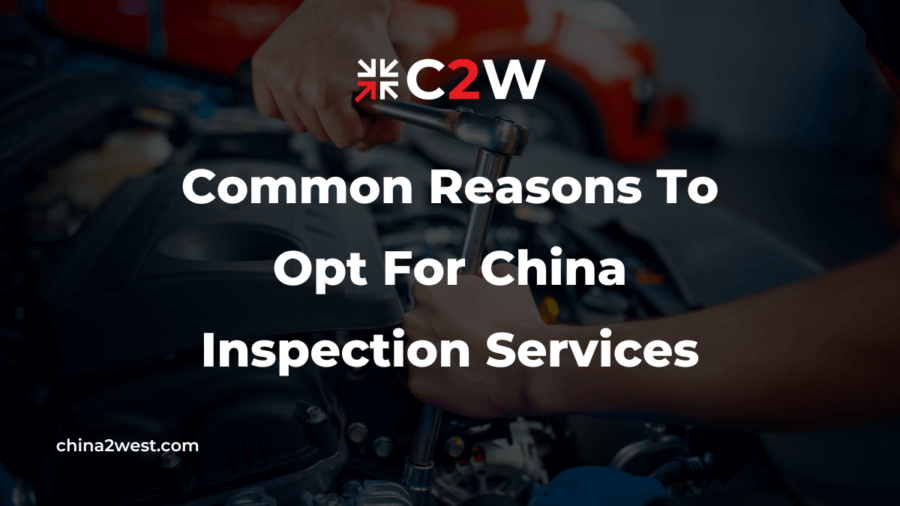In the globalized business landscape, China has emerged as a manufacturing powerhouse. The promise of lower production costs, unparalleled manufacturing capabilities, and access to a vast consumer market makes China an attractive destination for businesses looking to produce goods.
However, the road to successful manufacturing in China is fraught with challenges, and one of the most critical aspects to navigate is Quality Control (QC).
In this comprehensive guide, we’ll delve deep into the must-know QC red flags in China that every business should be aware of. These red flags, if overlooked, can result in costly production errors, damage to your brand’s reputation, and legal complications.
Lack of Transparency
Transparency is the cornerstone of a healthy business relationship, especially when dealing with overseas manufacturers. Here are some key areas where a lack of transparency can raise QC red flags:
Incomplete Product Information
Manufacturers who provide incomplete or vague information about their products are waving a red flag. This lack of clarity can lead to misunderstandings and ultimately, quality issues.
To mitigate this, it’s imperative to request comprehensive product specifications, including details about the materials used, product dimensions, and manufacturing processes. This ensures that both parties have a clear understanding of what is expected.
Hidden Costs
Hidden costs can turn a seemingly profitable deal into a financial nightmare. Many manufacturers may initially offer competitive prices to win your business but then add extra fees throughout the production process.
To avoid falling into this trap, make sure to clarify all costs upfront. Have a written agreement that explicitly outlines all expenses involved in the manufacturing process. This will help you avoid unwelcome surprises down the road.
Communication Barriers
Language and cultural differences can create significant communication barriers, potentially leading to QC issues. Misinterpretations or incomplete understanding of instructions can result in costly mistakes and defects in your products.
To bridge the communication gap, consider hiring a local translator or interpreter who can facilitate effective communication between you and your Chinese manufacturer.
Additionally, fostering a relationship based on mutual respect and open dialogue can go a long way in overcoming these barriers.
Inadequate Facilities and Equipment
The quality of manufacturing facilities and equipment plays a pivotal role in the final product’s quality. Here are some red flags related to facilities and equipment:
Outdated Machinery
Outdated or poorly maintained machinery can compromise the quality of your products and lead to production delays.
When assessing potential manufacturers, take the time to inspect their equipment and inquire about their maintenance practices. Well-maintained, up-to-date machinery is a positive indicator of a manufacturer’s commitment to quality.
Lack of Quality Control Measures
Manufacturers without a robust QC system in place are more likely to produce subpar goods. It’s crucial to ensure that your chosen manufacturer has clear QC processes and inspection protocols in place.
Ask for documentation that outlines their quality control procedures and check for any relevant certifications, such as ISO 9001, which demonstrates a commitment to quality management.
Intellectual Property Concerns
Protecting your intellectual property (IP) is of paramount importance when working with Chinese manufacturers. Here are some red flags related to IP protection:
No Respect for IP Rights
One of the biggest concerns when manufacturing in China is the potential lack of respect for intellectual property rights. Some Chinese manufacturers may engage in unauthorized copying or distribution of your products, which can be detrimental to your business.
To safeguard your IP, prioritize working with reputable manufacturers with a proven track record of IP protection.
Insufficient Non-Disclosure Agreements (NDAs)
To strengthen your legal standing, it’s essential to have well-drafted, legally binding non-disclosure agreements (NDAs) in place with your Chinese manufacturing partners.
These agreements should clearly define your rights and expectations concerning your designs, technology, and sensitive information. Failing to establish adequate NDAs can leave your intellectual property vulnerable to theft or misuse.
Inconsistent Quality Control
Consistency in QC practices is vital to ensure the predictability and quality of your products. Look out for these signs of inconsistent QC:
Lack of Testing and Inspection
Manufacturers that skip or rush through testing and inspection processes are more likely to produce faulty products. Insist on regular and rigorous testing and inspections throughout the production process.
This helps identify and address any issues early, reducing the likelihood of defects in the final product.
Fluctuating Quality Standards
Inconsistent adherence to quality standards can result in batches of products that vary in quality. To avoid this, ensure that your chosen manufacturer follows a standardized quality control framework consistently.
This includes strict adherence to specifications, quality benchmarks, and performance metrics.
Ethical and Environmental Concerns
In today’s global market, ethical and environmental considerations are increasingly significant. Be vigilant for these ethical and environmental red flags:
Unethical Labor Practices
Manufacturers that engage in unethical labor practices can tarnish your brand’s reputation and lead to legal liabilities. Investigate the manufacturer’s labor policies and working conditions.
Ensure they comply with international labor standards and treat their workers fairly and ethically.
Environmental Compliance
Environmental regulations are becoming stricter worldwide. Failing to comply with these regulations can result in legal and reputational risks, including fines and negative publicity.
Before partnering with a Chinese manufacturer, confirm that they are committed to environmental compliance and responsible manufacturing practices.
By being vigilant and proactive, you can safeguard the quality of your products, preserve your brand’s reputation, and ensure the longevity of your business relationships with Chinese manufacturers. Don’t wait until it’s too late; prioritize QC and lay the foundation for a prosperous and enduring partnership with your Chinese manufacturing partners. You can also choose to work with one that offers third-party QC services, like C2W with their 18 years of industry experience and QC agents all across Asia. Contact us now!




